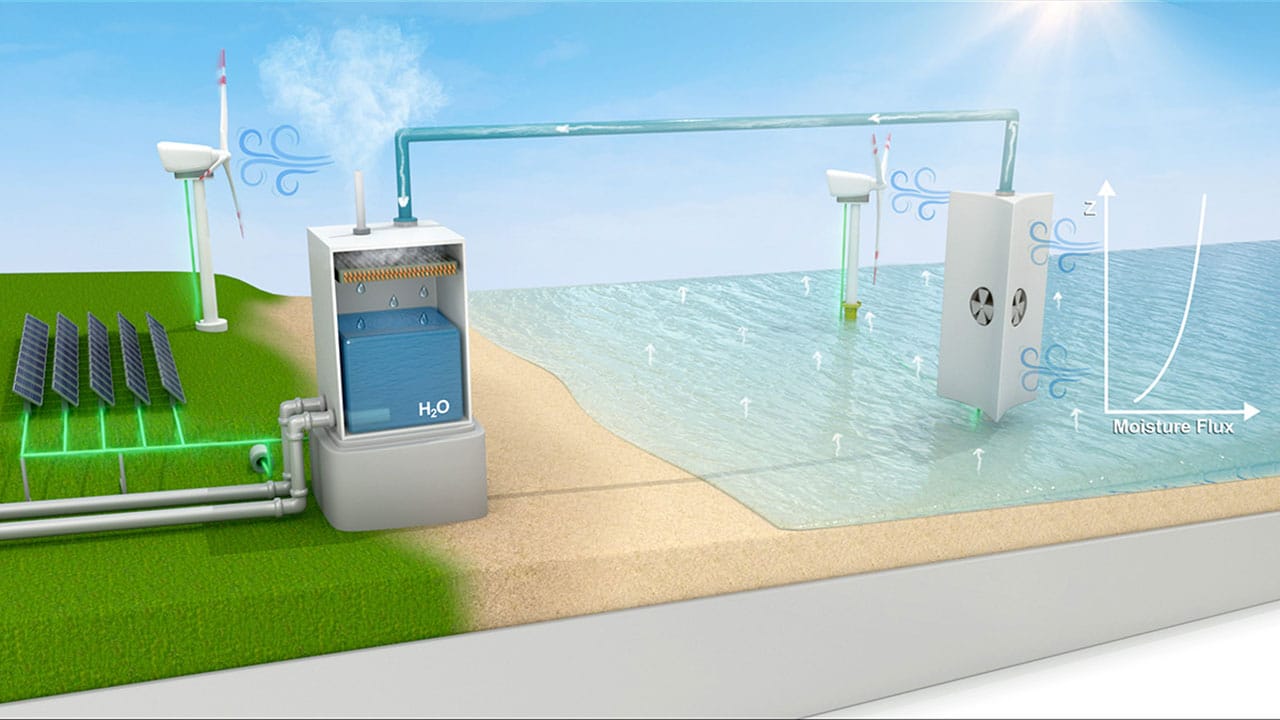
While significant parts of the globe are already facing significant freshwater scarcity, the need for more freshwater is projected to increase in order to sustain the increasing global population and economic growth and adapt to climate change.
An almost limitless supply of fresh water exists in the form of water vapor above Earth’s oceans, yet remains untapped. Now, researchers at the University of Illinois Urbana-Champaign (UIUC) have proposed a new infrastructure capable of harvesting oceanic water vapor as a solution to limited supplies of fresh water in various locations around the world.
The study evaluated 14 water-stressed locations across the globe for the feasibility of a hypothetical structure capable of capturing water vapor from above the ocean and condensing it into fresh water – and doing so in a manner that will remain feasible in the face of continued climate change.
“Water scarcity is a global problem and hits close to home here in the U.S. regarding the sinking water levels in the Colorado River basin, which affects the whole Western U.S.,” said Praveen Kumar, research executive. “However, in subtropical regions, like the Western U.S., nearby oceans are continuously evaporating water because there is enough solar radiation due to the very little cloud coverage throughout the year.”
According to the researchers, previous techniques of wastewater recycling, cloud seeding, and desalination have had only limited success. Although established in some parts of the world, desalination plants face sustainability issues due to the brine and heavy metal-laden wastewater they produce.
Eventually, we will have to find a way to increase the supply of fresh water, as conserving and recycling water from existing sources, while essential, will not be enough to meet human needs. Now, the UIUC team devised a new method that can do that at large scales.
For their study, the researchers conducted atmospheric and economic analyzes of the placement of hypothetical water vapor-extracting structures 210 meters wide and 100 meters high. Based on their models, the scientists found that capturing moisture over ocean surfaces is feasible for many water-stressed regions worldwide. The estimated water yield of the proposed structures could supply fresh water to large population centers in the subtropics.
“The climate projections show that the oceanic vapor flux will only increase over time, providing even more fresh water supply,” Afeefa Rahman said. “So, the idea we are proposing will be feasible under climate change. This provides a much-needed and effective approach for adaptation to climate change, particularly to vulnerable populations living in arid and semi-arid regions of the world.”
According to scientists, this solution for global supply works based on the natural water cycle, eliminating the use of outdated wastewater recycling techniques, cloud seeding, or expensive ocean desalination processes. The researchers said this study opens the door for novel infrastructure investments that can effectively address the increasing global scarcity of fresh water.
Journal reference:
- Afeefa Rahman, Praveen Kumar and Francina Dominguez. Increasing freshwater supply to sustainably address global water security at scale. Scientific Reports, 2022; DOI: 10.1038/s41598-022-24314-2
Newly proposed method harvests untapped sources of fresh water
Source: Tambay News

0 Comments